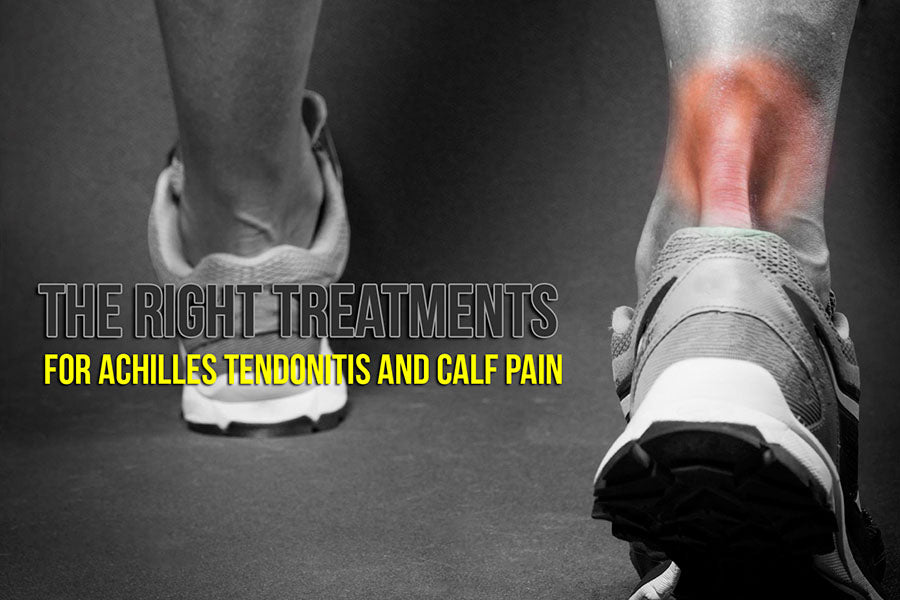The right Treatments for Achilles Tendonitis and Calf Pain

Many commonly prescribed treatments for Achilles Tendonitis and Calf Pain are ineffective because they fail to consider the role that the calves and the Achilles tendon play in running and exercise. If you're an athletic individual - or even just someone who likes to stay active, you probably know how easy it is to fall victim to strains and calf pains.
While calf compression sleeves can be a good way to help promote circulation around the leg and reduce some of the pressure placed around the shin during running, it's worth noting that the best treatments for Achilles tendonitis and calf pain are the ones that focus on strengthening the muscles in your calves and improving your range of motion.
Understanding your Calves
Before we get started looking at exercises to promote treatments for Achilles tendonitis and calf pain, it's worth discussing how the calf actually works. The lower part of the leg is made up of two muscles: the soleus and the gastrocnemius. The gastrocnemius has two "heads" which combine to make up the thicker part of the thigh, while the soleus forms the lower, slender part of the muscle.
While many people assume that the calves help to propel the body forward during running, research suggests that the calf is actually most active when the foot makes contact with the ground, generating hip extension to drive the runner forward. This means that instead of performing calf raises to improve strength, comprehensive treatments for Achilles tendonitis and calf strength need to focus on reducing the load on the gastrocnemius when the foot hits the ground.
In simple terms, avoiding injury means enhancing strength and improving running form - ensuring that you generate the correct hip extension to take pressure of the gastrocnemius.
Strengthening the Calves to Prevent Injury
So, if generic calf raises aren't enough when it comes to treatments for Achilles tendonitis and calf pain, we need to consider other ways in which calf injury can be prevented. This means strengthening the glutes and hips to ensure that you generate enough power during running to prevent the calves and knees from taking on too much pressure.
Some helpful exercises include:
- Lunges - Focusing on keeping your core muscles tight, stretch one leg forward, and ensure the knee of that leg doesn't extend past the tip of your toes. Advanced athletes can upgrade this exercise using a medicine ball for added difficulty.
- Straight leg bounds - Run forwards keeping your legs straight so that you drive into the ground using your glutes and hips.
- Donkey kicks - Using a band or piece of elastic that wraps one end around your foot, and one around your knee, start on all fours and extend your leg upwards and backwards - focusing on contracting your glutes.
- Single-leg glute bridge - Lying on your back with a leg bent, and the other leg flat on the ground, lift your pelvis slowly by contracting your core and glutes. Keep your shoulder blades flat against the floor.
Preventing Achilles Injury
Once you've strengthened your calf muscles, you'll be in a better position to work on your running form - which will help to take some of the excess pressure off your Achilles tendon - the area responsible for generating power at push off. The primary cause of Achilles injury is excessive stress, which is instigated by poor ankle motion, weak tendon structure, and improper running form.
For More Information on the ActiveGear Calf Compression Sleeve Click Here!


Leave a comment